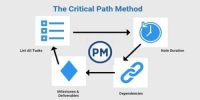Planning and controlling are inseparable twins of management. Planning and controlling functions always co-exist or have to exist together as one function depends on the other. Planning decides the control process and controlling provides a sound basis for planning. In simple words, planning and controlling are basically dependent on each other.
The relationship between planning and controlling can be divided into the following two parts:
(1) Interdependence between Planning and Controlling
(2) Difference between Planning and Controlling.
A system of control presupposes the existence of certain standards. These standards of performance which serve as the basis of control are provided by planning. Once a plan becomes operational, controlling is necessary to monitor the progress, measure it, discover deviations and initiate corrective measures to ensure that events conform to plans. Thus, planning without controlling is meaningless. Similarly, controlling is blind without planning. If the standards are not set in advance, managers have nothing to control.
The relationship between planning and control can be explained as follows:
- Planning Originates Controlling:
In planning the objectives or targets are set in order to achieve these targets control procedure is needed. So planning precedes control.
- Controlling Sustains Planning:
Controlling directs the course of planning. Controlling spots the areas where planning is required.
- Controlling Provides Information for Planning:
In controlling the real performance is compared to the standards set and records the deviations, if any. The information collected for exercising control is used for planning also.
- Controlling measures plans:
Controlling measures are taken in accordance with the pre-determined plans, programs, and targets. Planning is the initial step and controlling is in the process and required at every step.
- Planning and controlling, both are forward-looking:
Both planning and controlling aim at the future prospects of the business. Planning is always for future and control is also forward-looking. Their combined efforts are to reach maximum output with a minimum of cost.
Relationship between the two can be summarized in the following points –
- Planning preceeds controlling and controlling succeeds in planning.
- Planning and controlling are inseparable functions of management.
- Activities are put on rails by planning and they are kept at the right place through controlling.
- Planning and controlling are integral parts of an organization as both are important for the smooth running of an enterprise.
- Planning and controlling reinforce each other. Each drives the other function of management.
Therefore, planning involves looking ahead and is called a forward-looking function. On the contrary, controlling is like a postmortem of past activities to find out deviations from the standards. In that sense, controlling is a backward-looking function. However, it should be understood that planning is guided by past experiences and the corrective action initiated by control function aims to improve future performance.
Relationship between planning and control can be understood as follows:
- Planning identifies actions and controlling ensures that actions are carried out.
- A poor control system is followed by failure of plans and effective control system reinforces the plans.
- Controlling helps in revising or reframing the plans.
Thus, planning and controlling are both backward-looking as well as a forward-looking function.
















